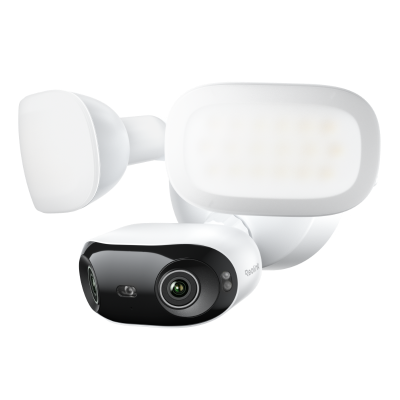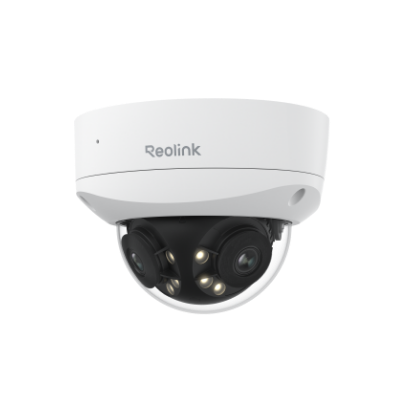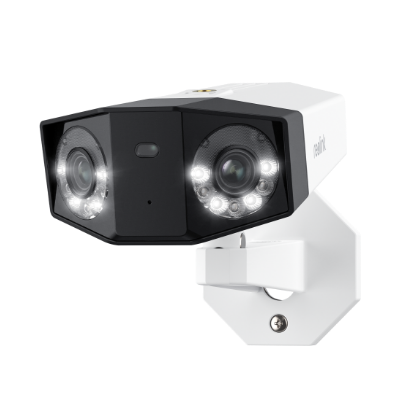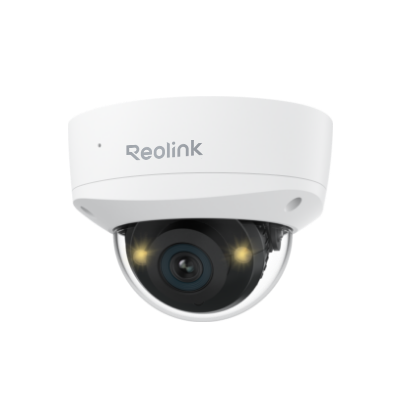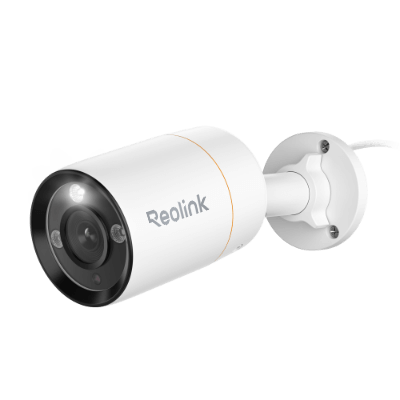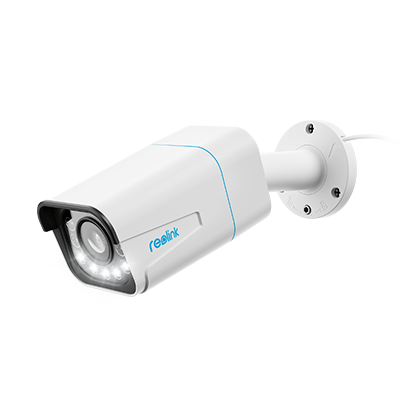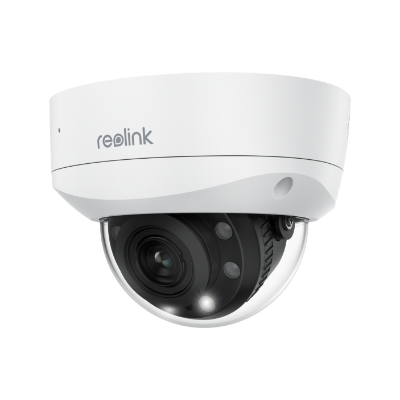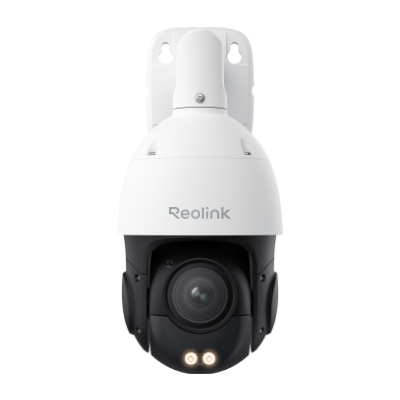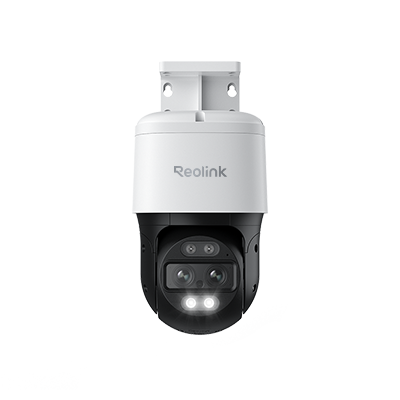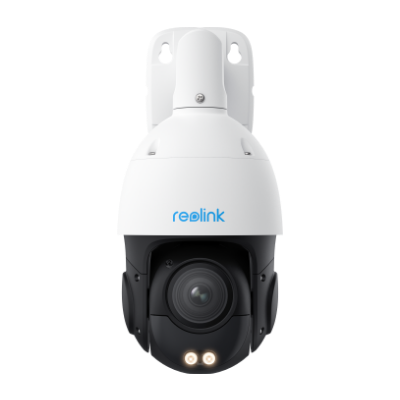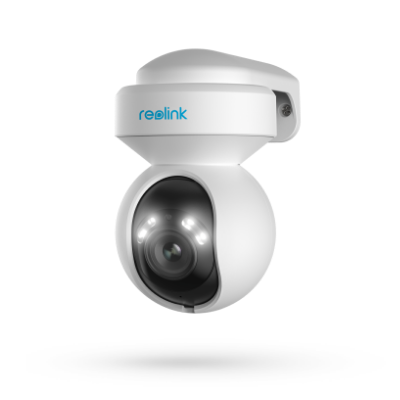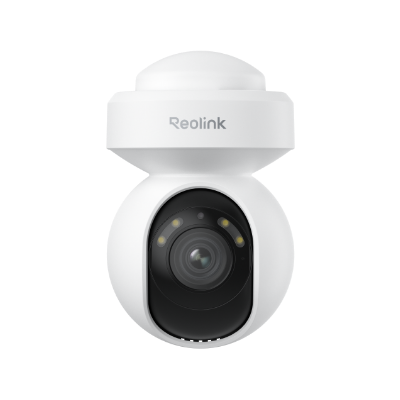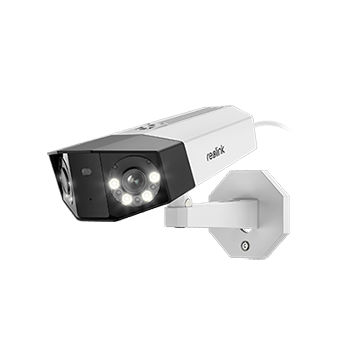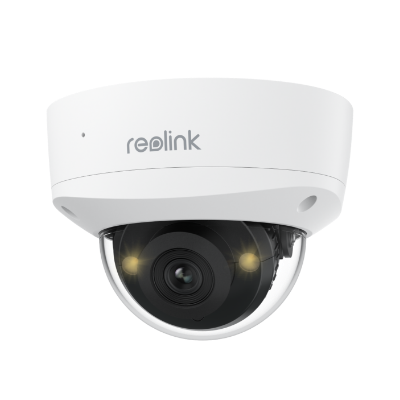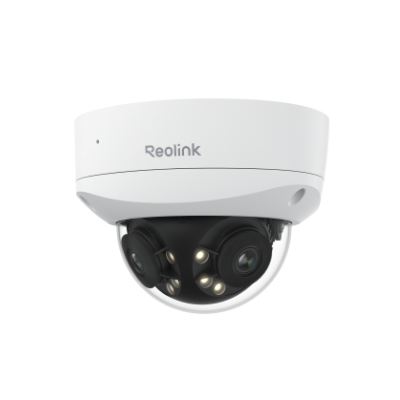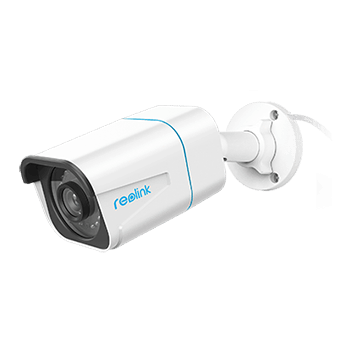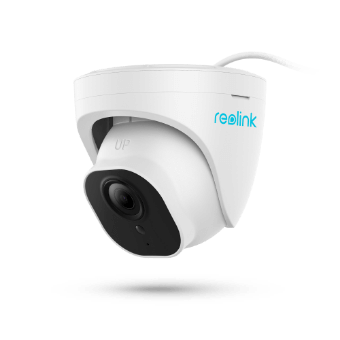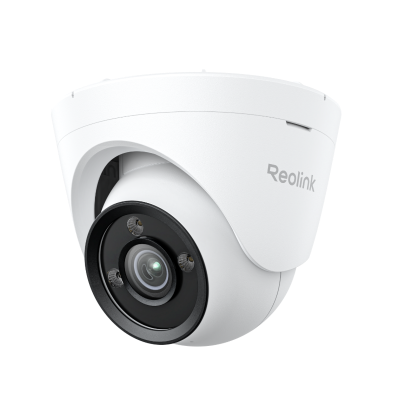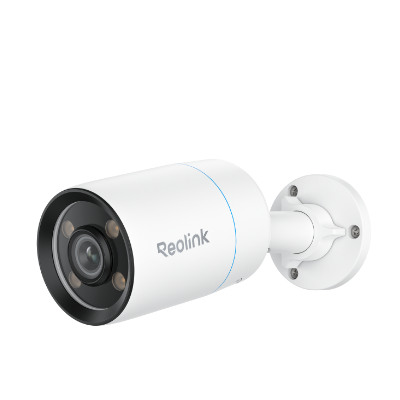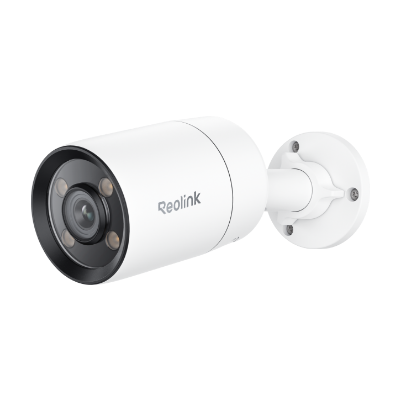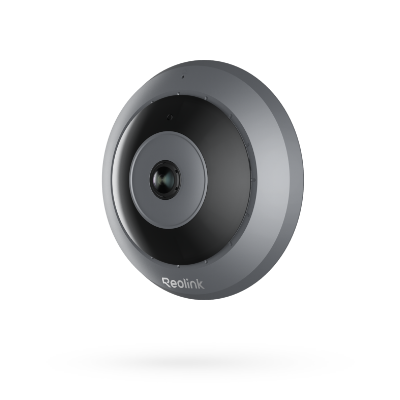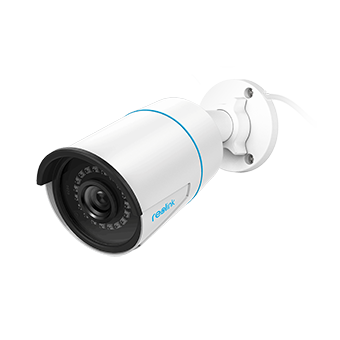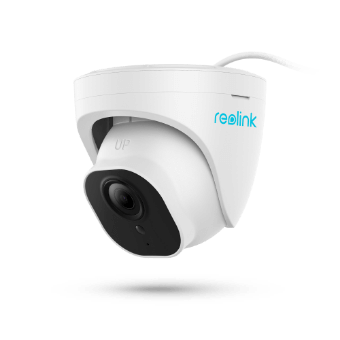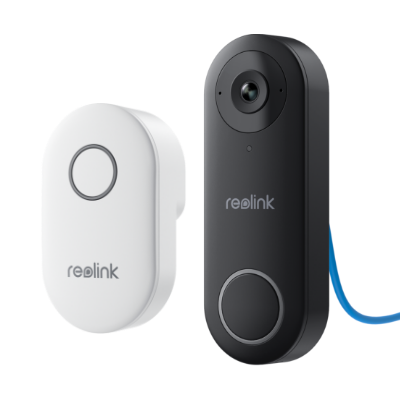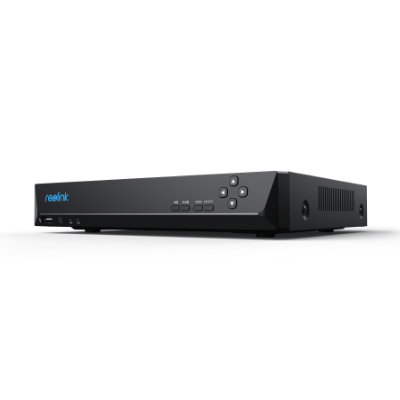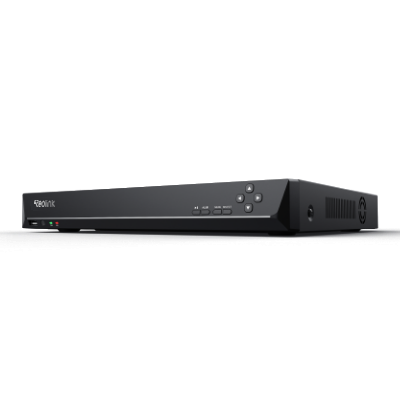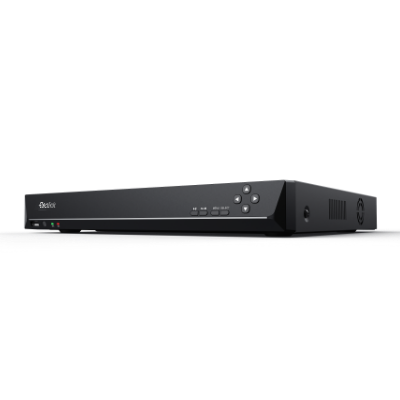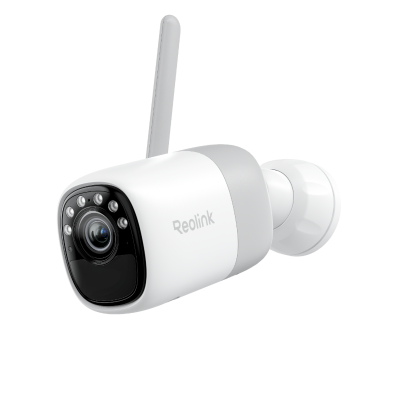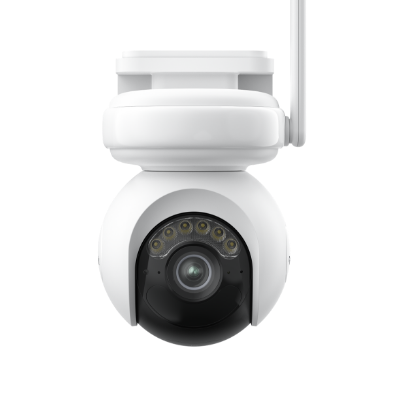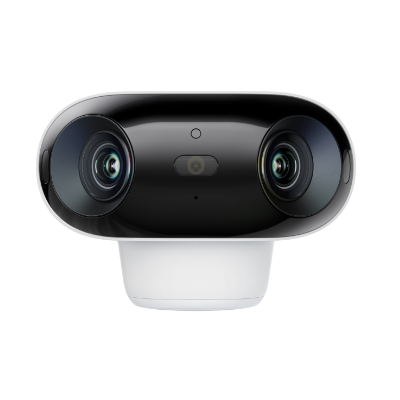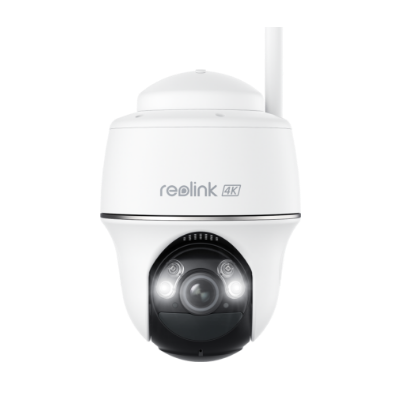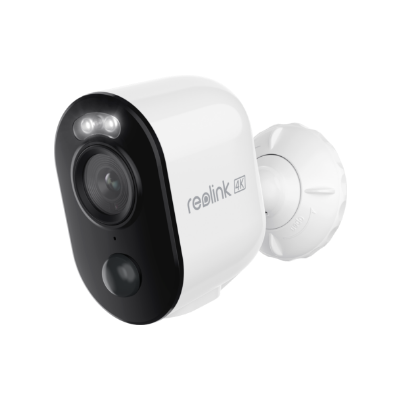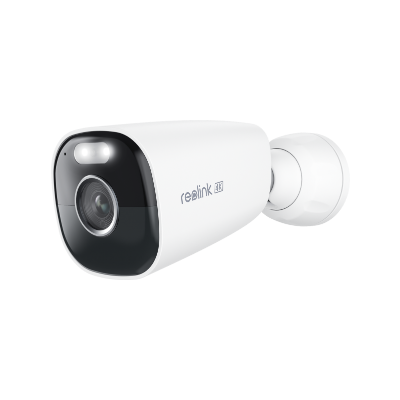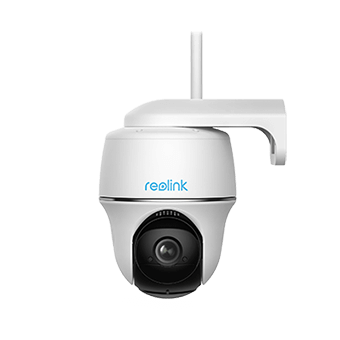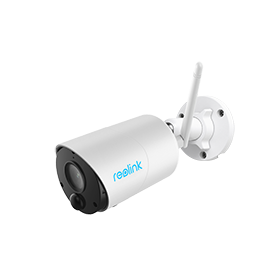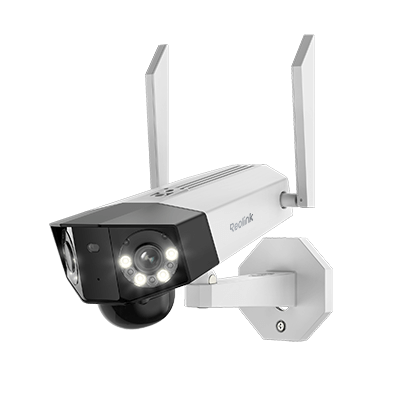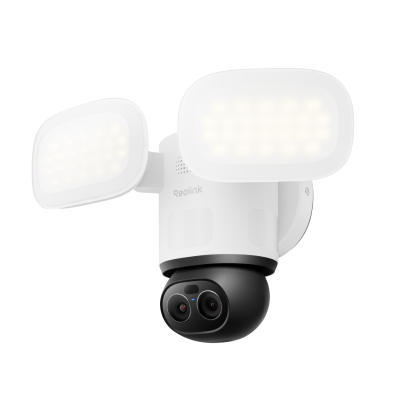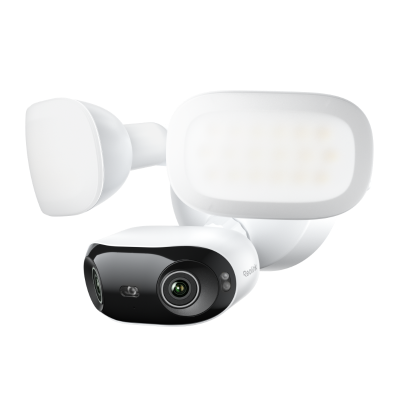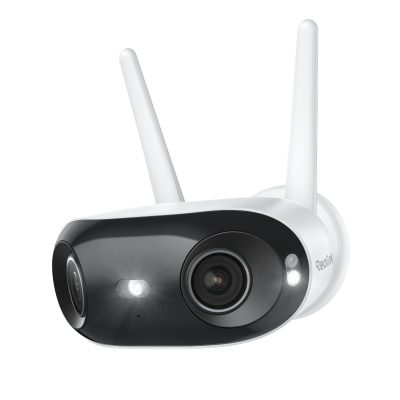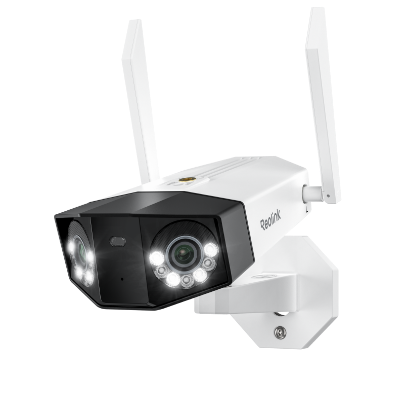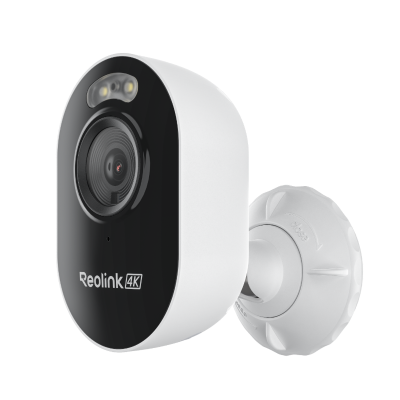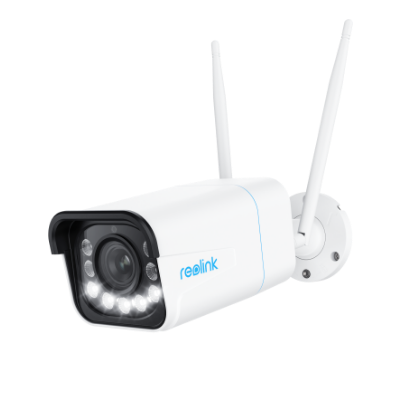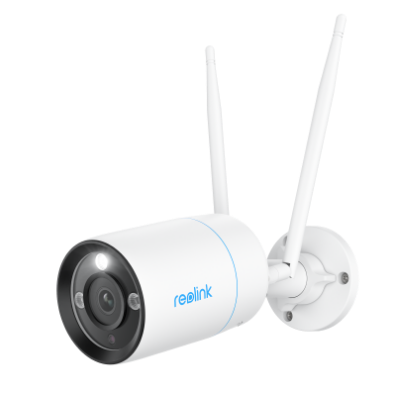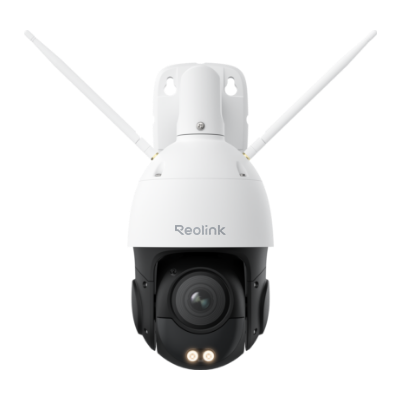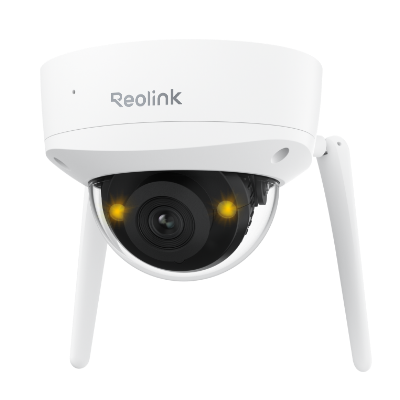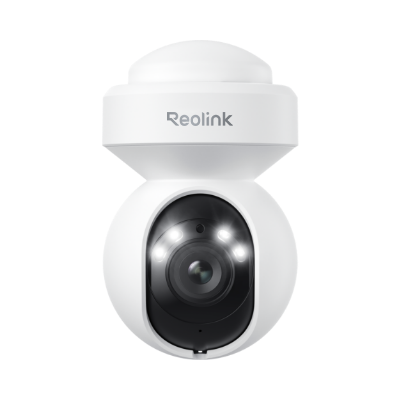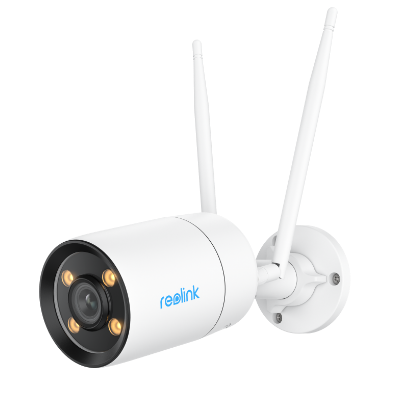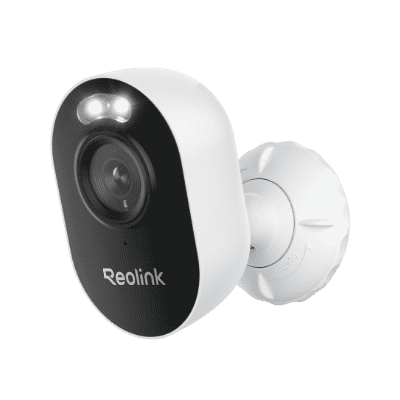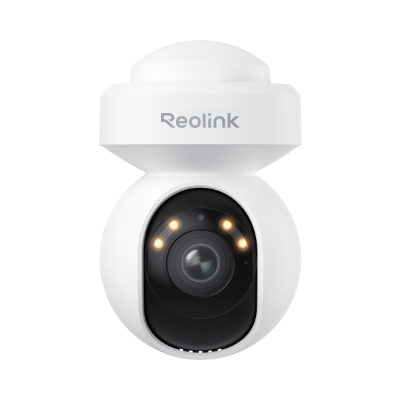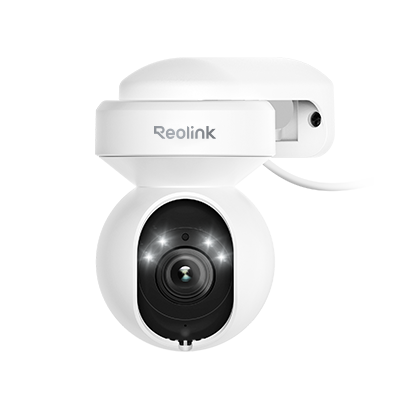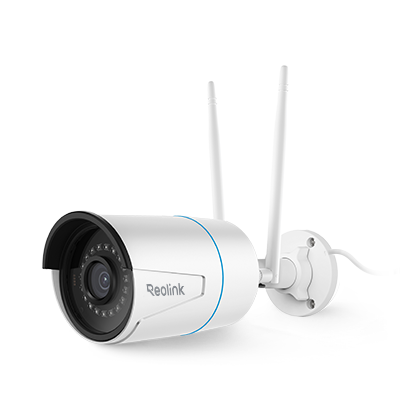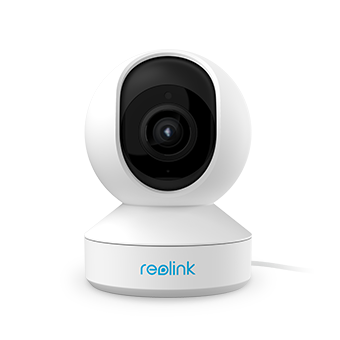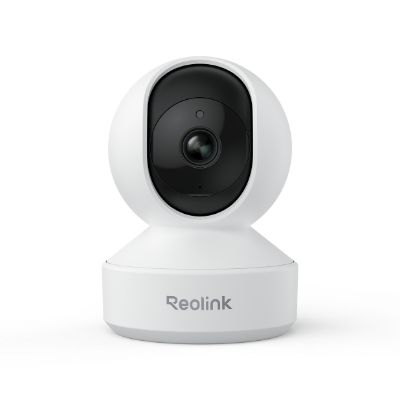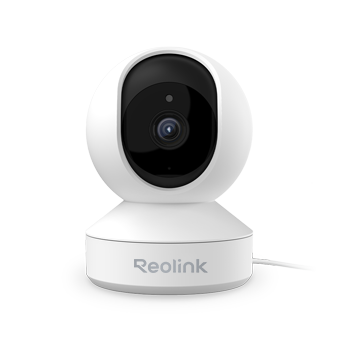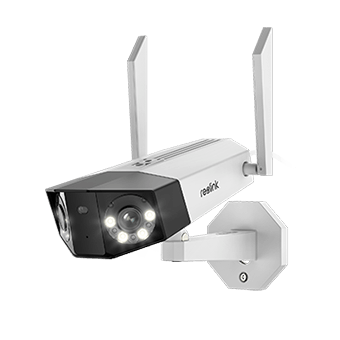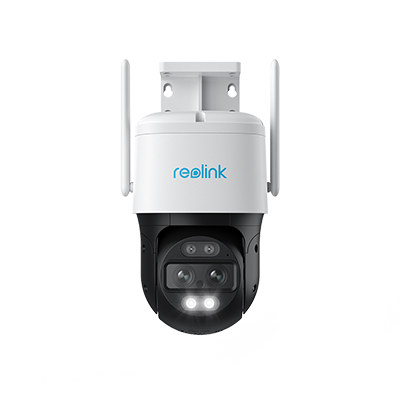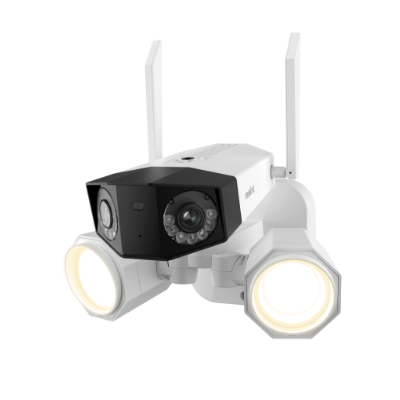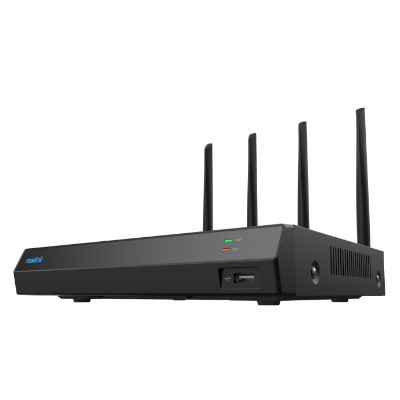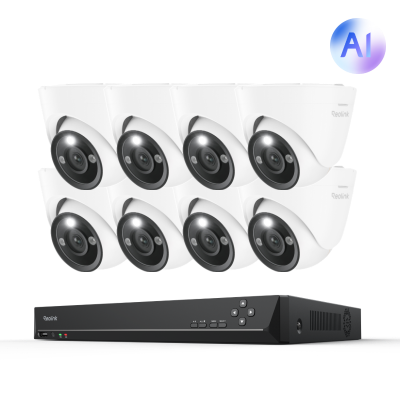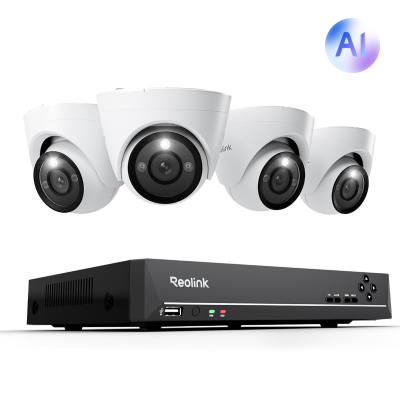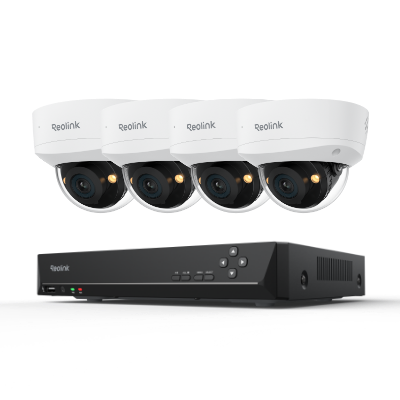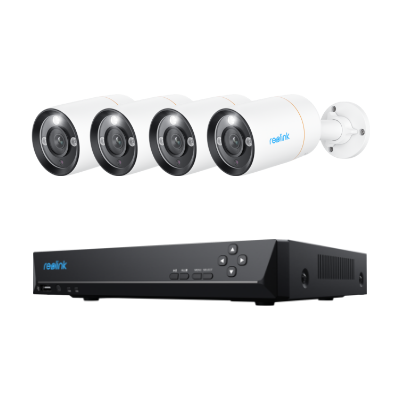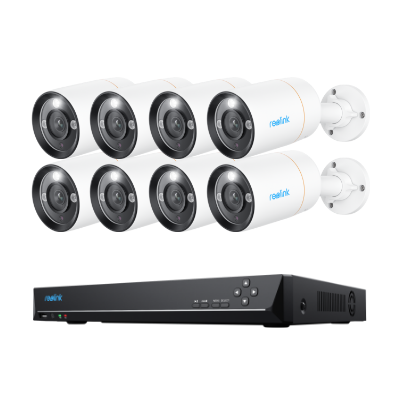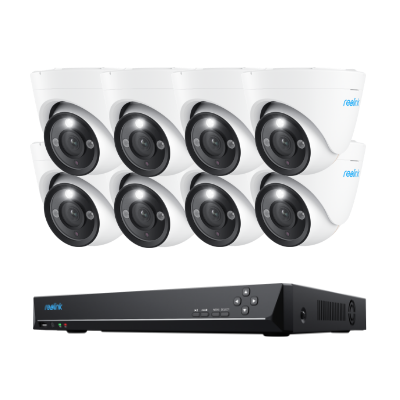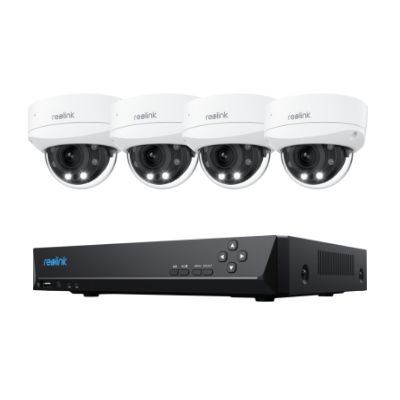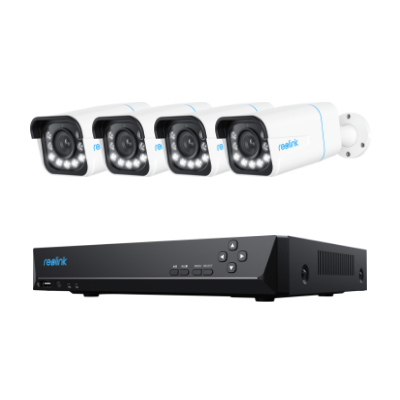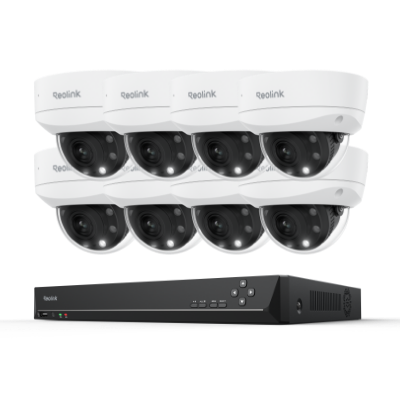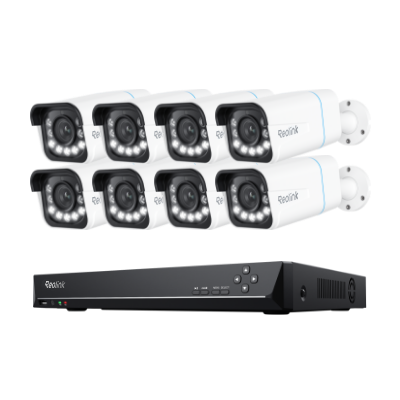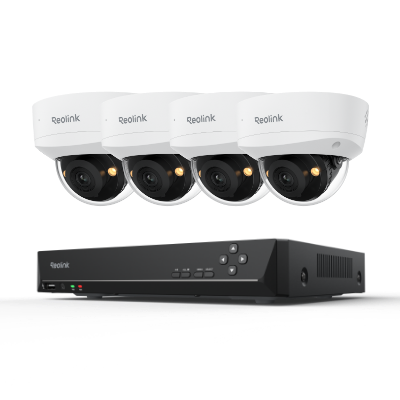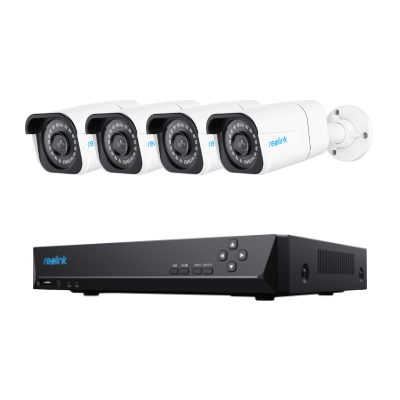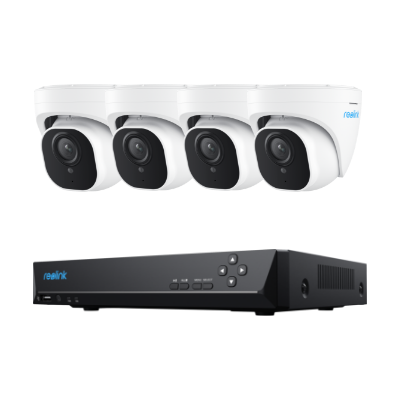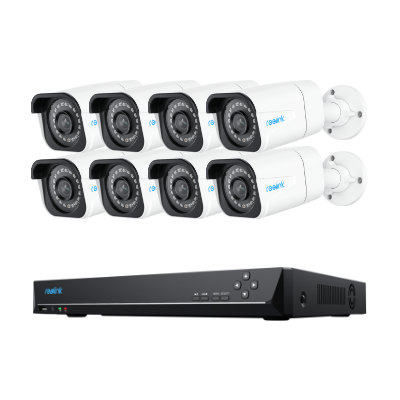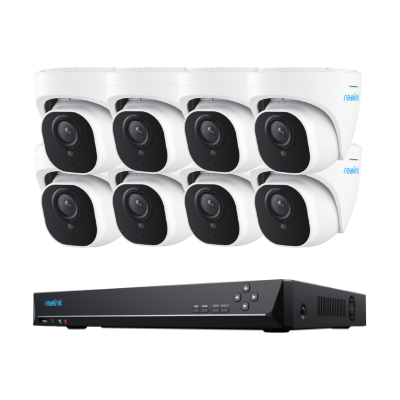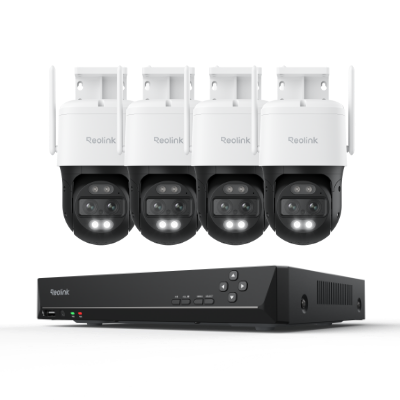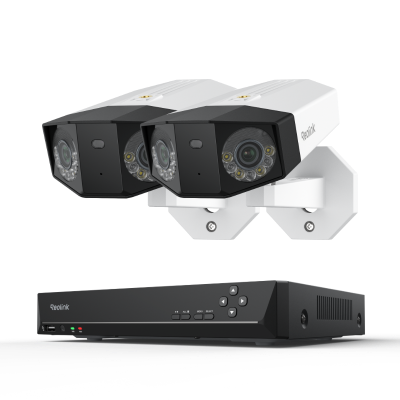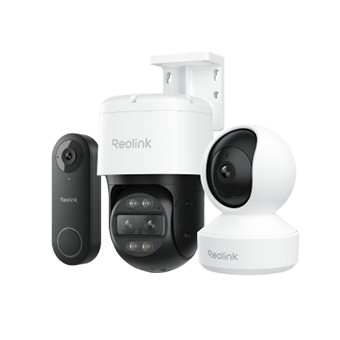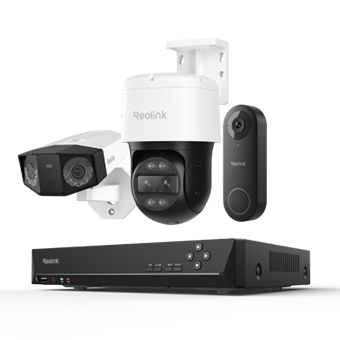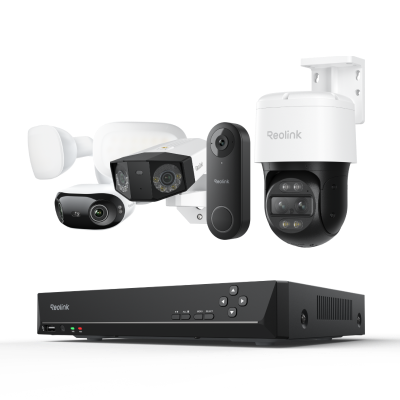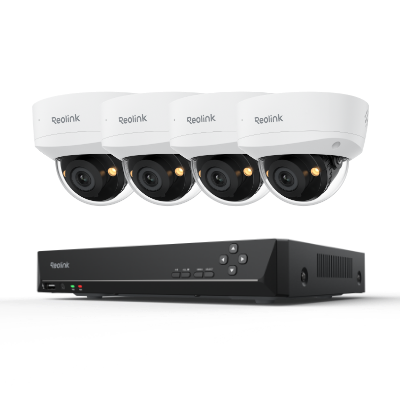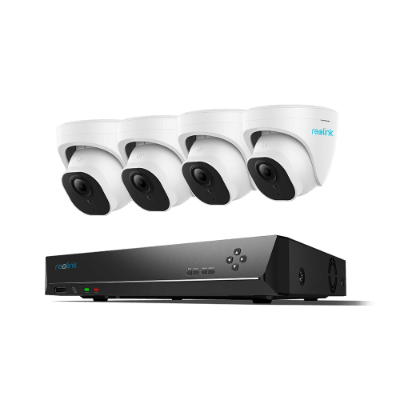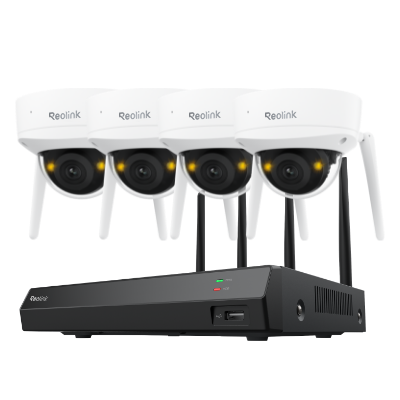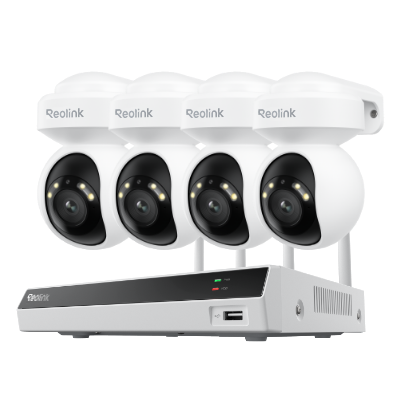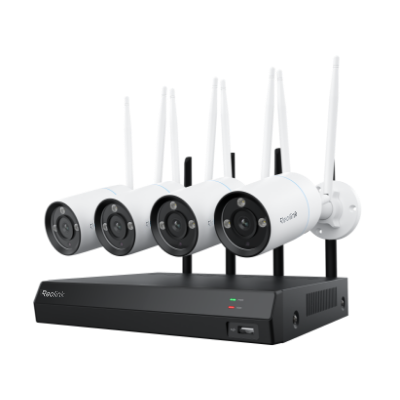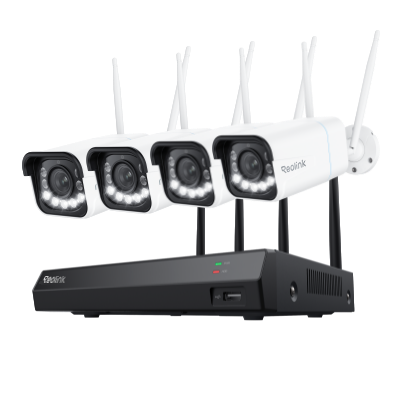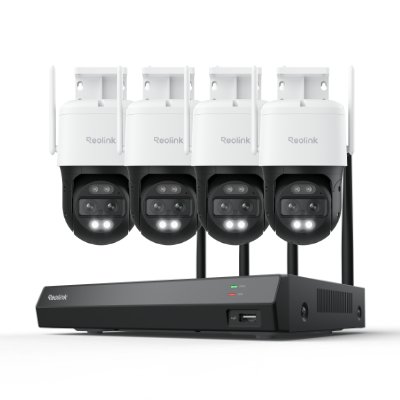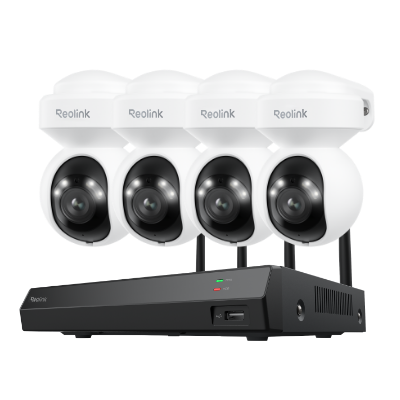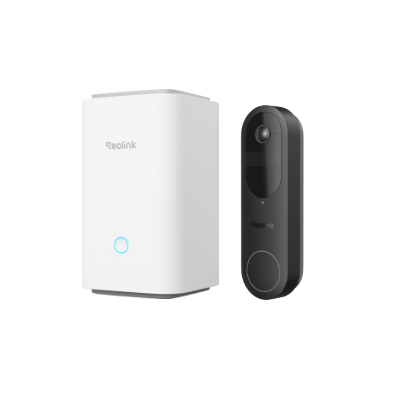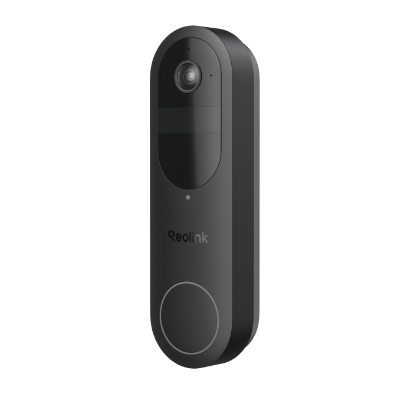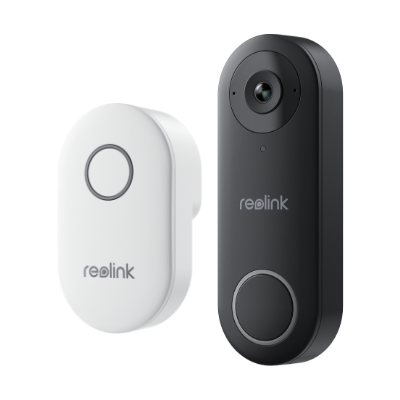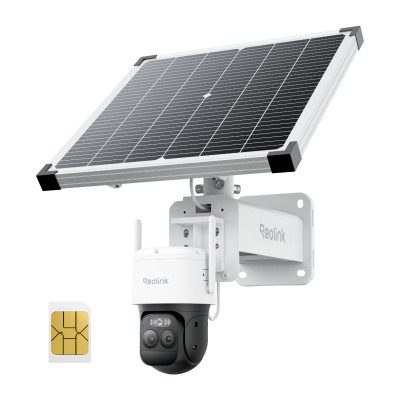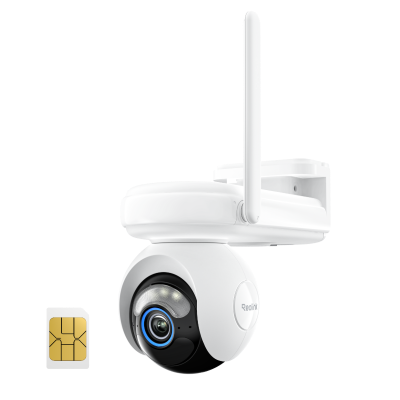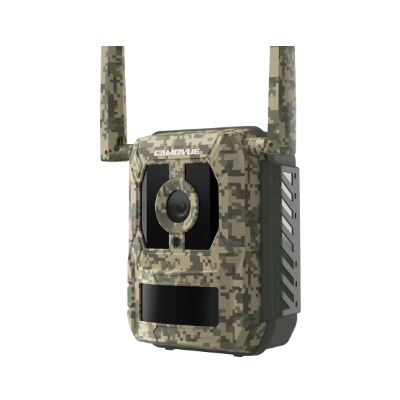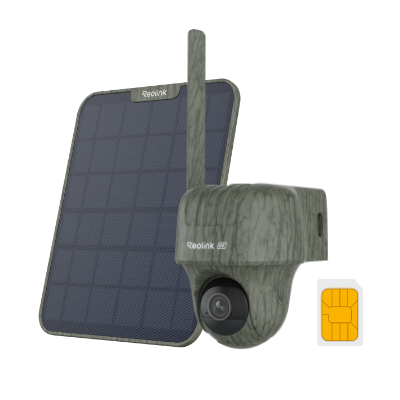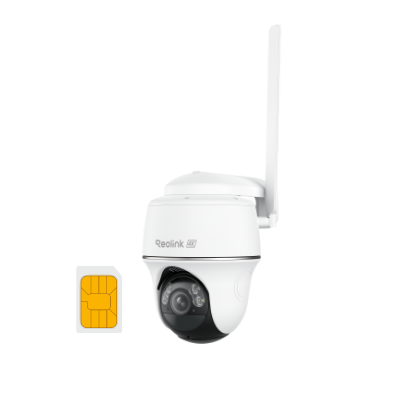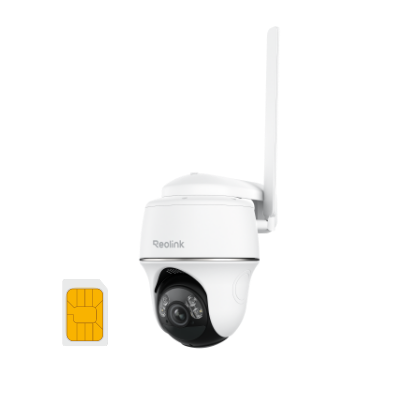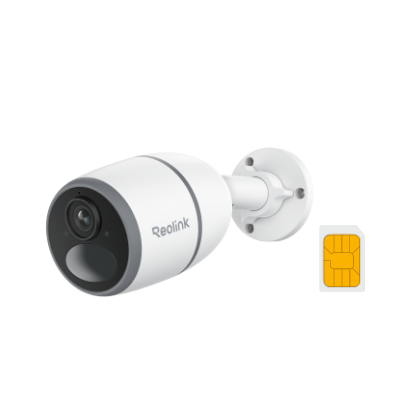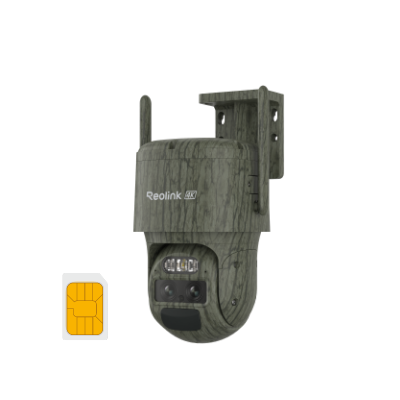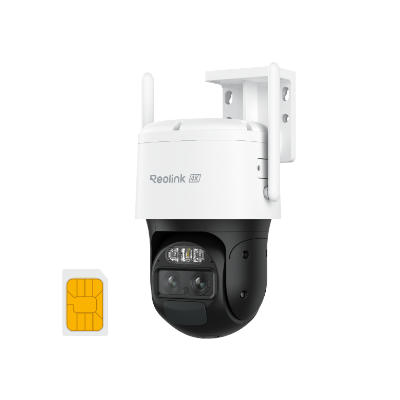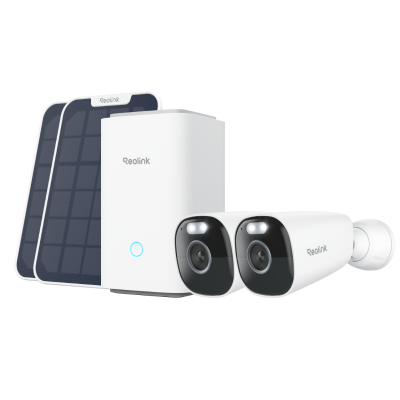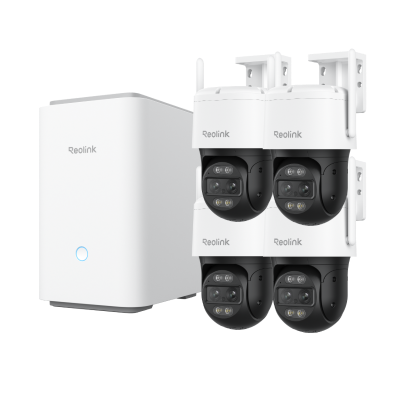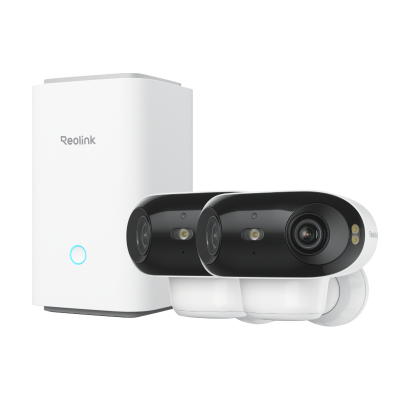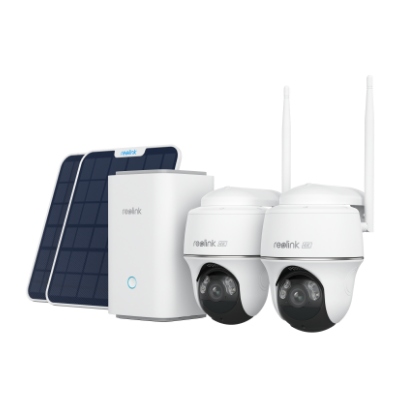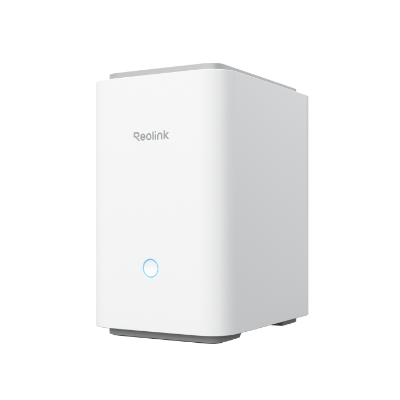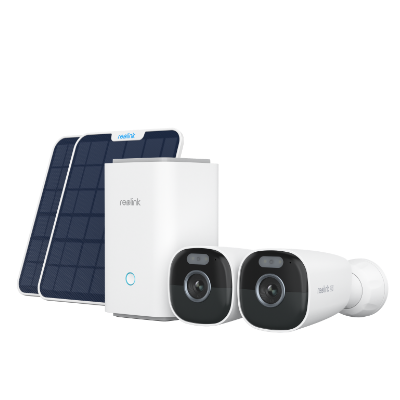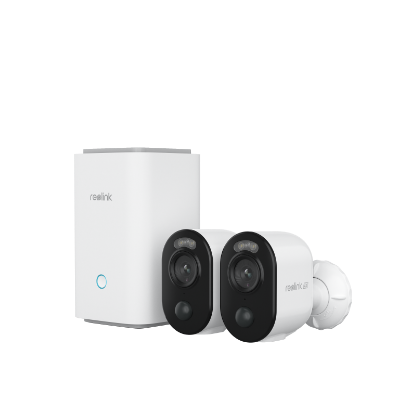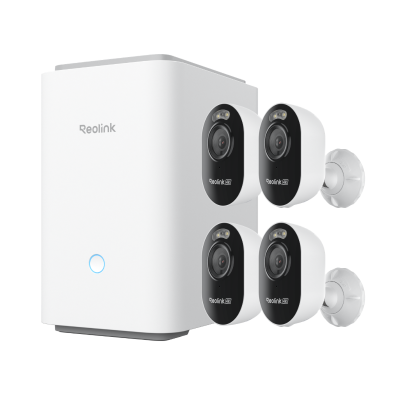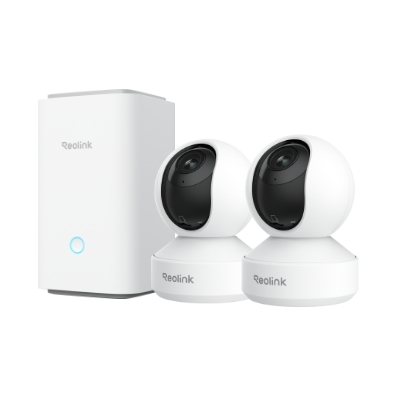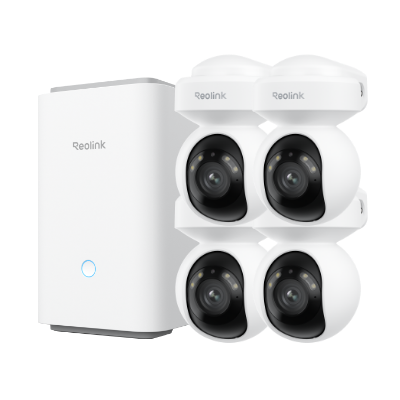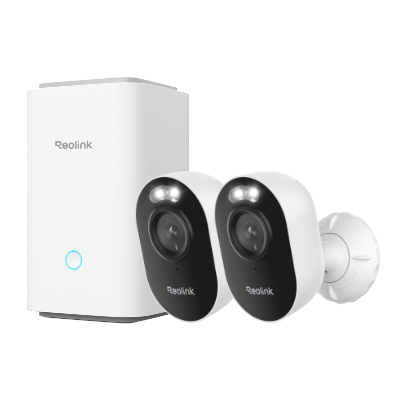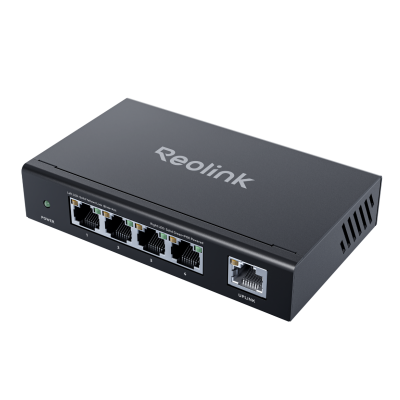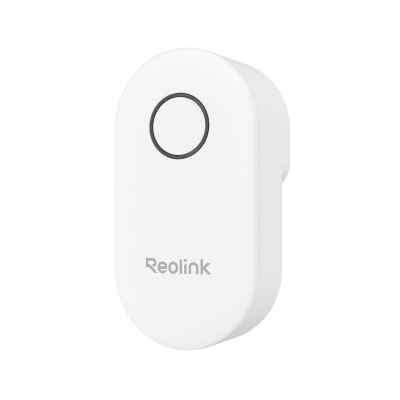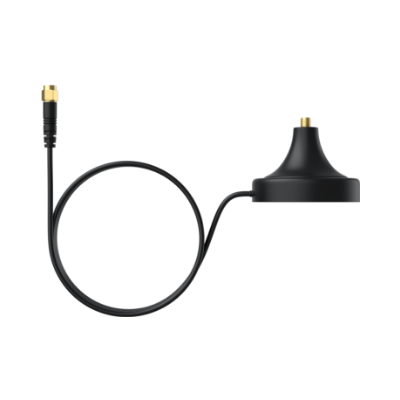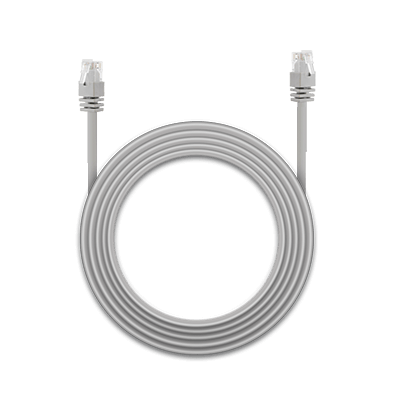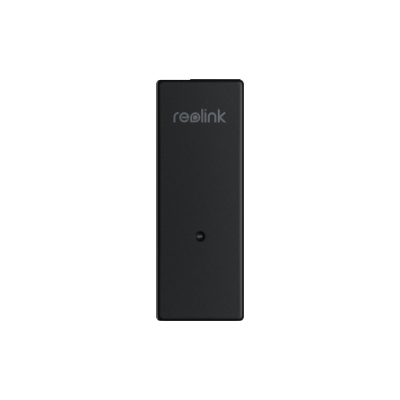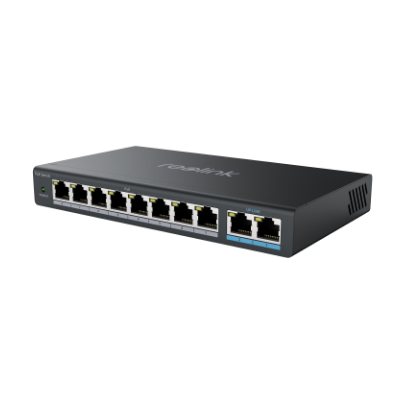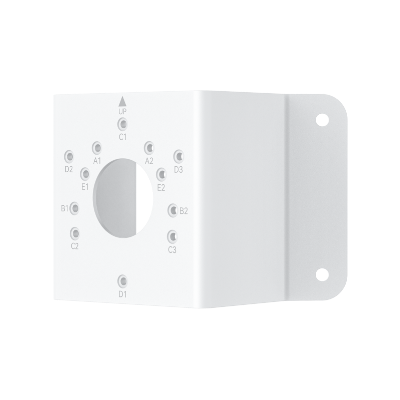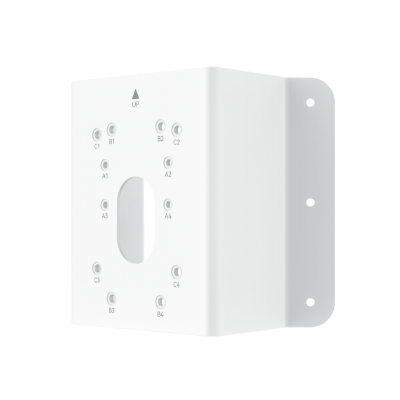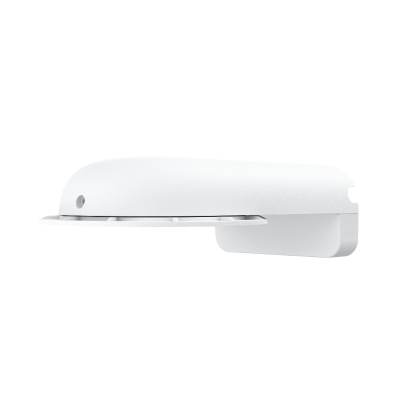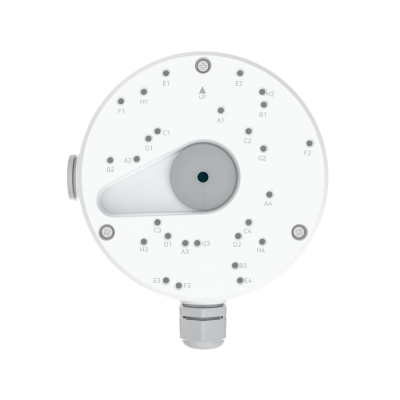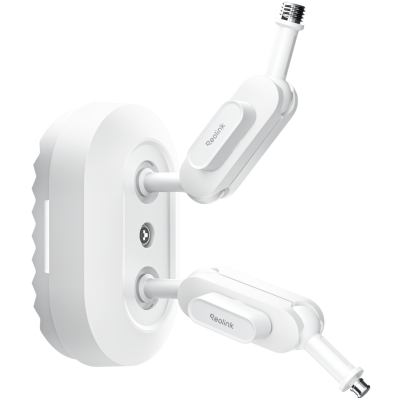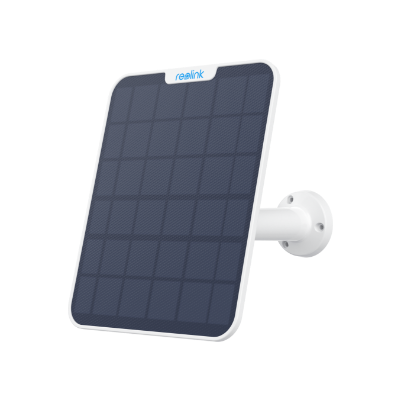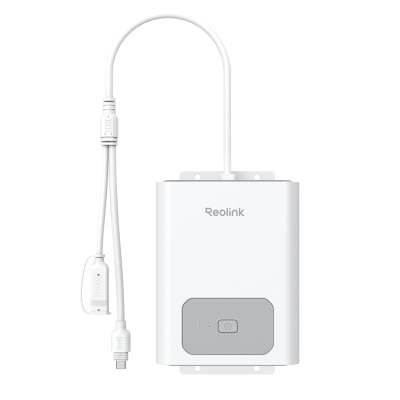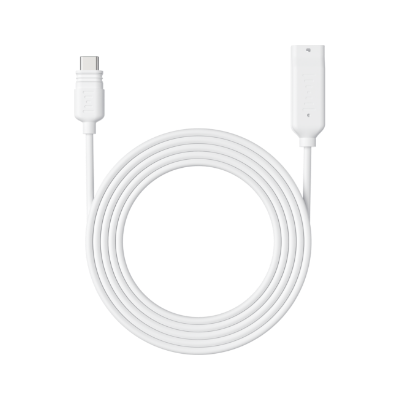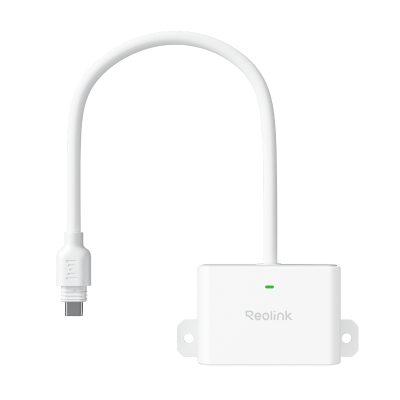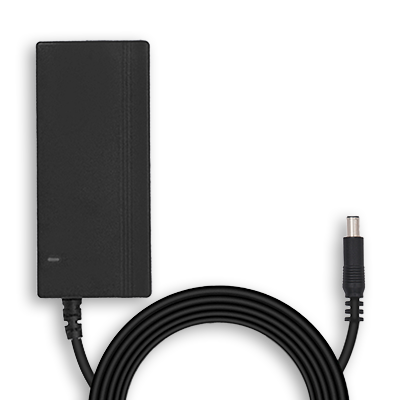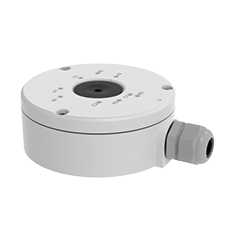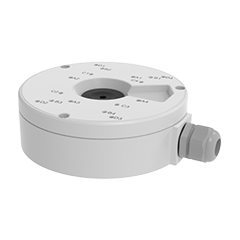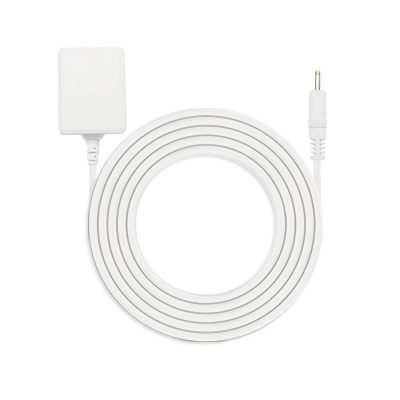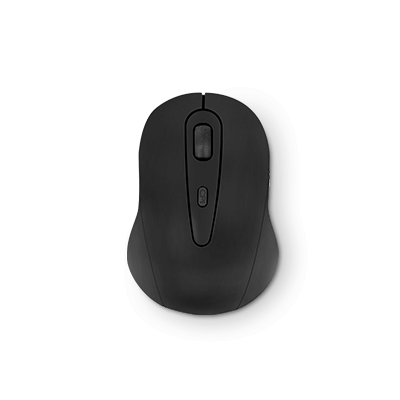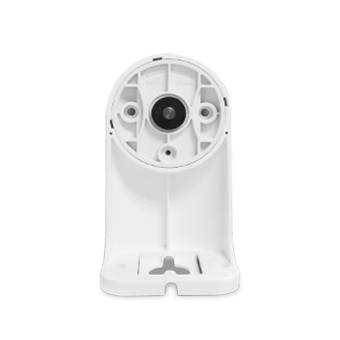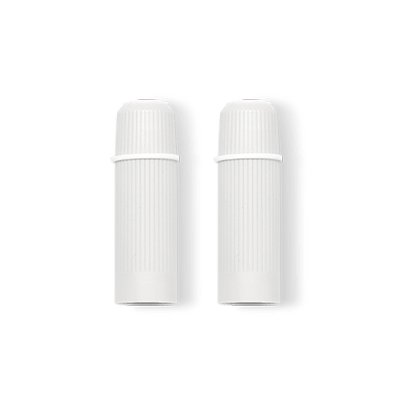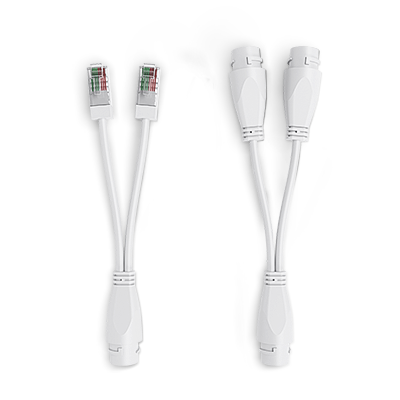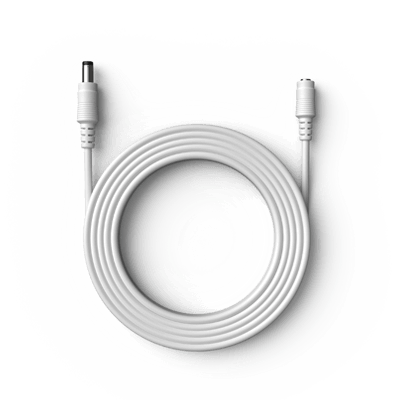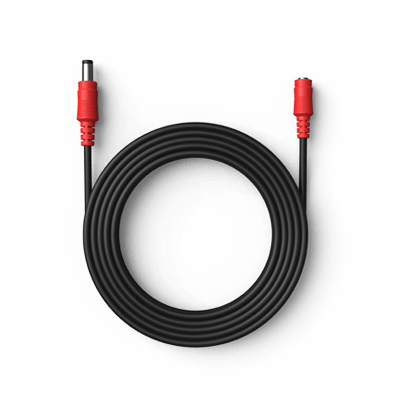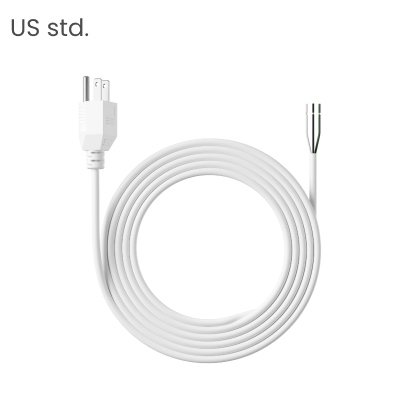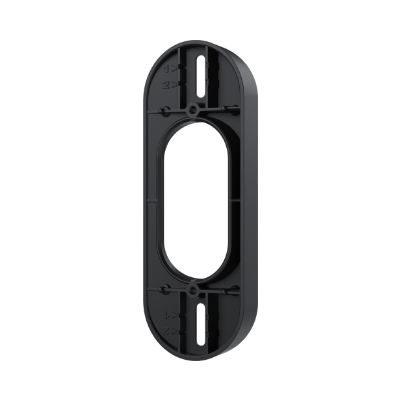PoE Devices 101: Types, Benefits, and Installation Guidance
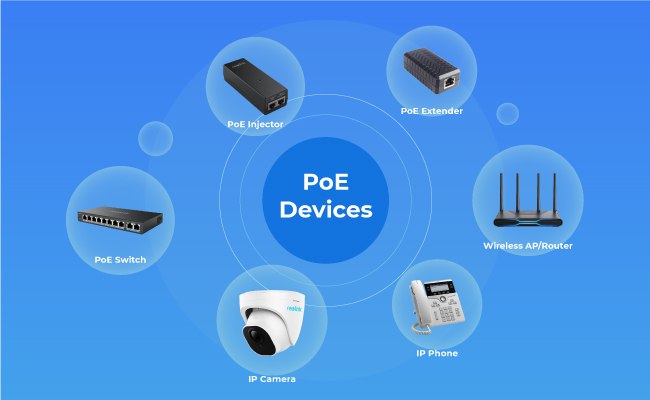
Despite the ubiquity of Wi-Fi in homes, Power over Ethernet (PoE) is revolutionizing home security by making it smarter, safer, and more connected. Rather than utilizing a wireless network that can be hacked through any number of online devices, PoE transmits data via one cable that cannot be attacked unless there is a direct, wired connection. PoE also simplifies security device installations and reduces the number of cables that need to be managed, improving your organization and efficiency.
In this ultimate guide, we will explore several PoE devices as well as their applications and benefits. By the end of the guide, you will have a thorough understanding of these devices. You will be able to make an informed decision about whether you should implement them in your home and about which devices are best suited to your needs.
- Basics of Power over Ethernet (PoE)
- Advantages of Using PoE Devices
- PoE Standards and Classifications
- Different Types of PoE Devices for Home
- Common powered devices (PD) for home security systems
- The Comparison between similar PoE devices
- Factors to Consider When Choosing PoE Devices
- Best Practices for PoE Device Deployment
- Best PoE Security Camera Recommendation
- Conclusion
Basics of Power over Ethernet (PoE)
Power over Ethernet (PoE) is a technology that enables the transmission of both data and electrical power over a single Ethernet cable.
Understanding the basics of Power over Ethernet and how it works is the first step to deciding whether PoE is a good security solution for you.
PoE technology emerged in the early 2000s, and because it only requires one cable for data and power, its installation is often very easy. This also minimizes the need for significant infrastructure investments (and electricians to install or wire your devices). The installation process is also flexible. Since the cable provides power, there is no need for outlets outside the home, and your device can be placed anywhere. However, before placing the PoE cables you need to terminate them well.
Network deployments for PoE devices are simple and require fewer resources due to improved connectivity and centralized power management. Ethernet connectivity is often faster than a wireless option, which increases the speed with which data can be transmitted. Centralized power management means that the device will have a power backup, so during an outage, your device will continue to function.
In the realm of home security, PoE devices provide efficient, reliable, and scalable home security solutions. They are easy to install and, because of the low investment needed, you can install more as needed without investing too much time and money.
As the demand for advanced security systems continues to grow, PoE technology has proven to be an invaluable asset for homeowners looking to protect their properties and families.
Advantages of Using PoE Devices
Utilizing PoE devices in your network offers numerous benefits:
Simplified installation: PoE eliminates the need for separate power supplies and cables, making installations quicker and more cost-effective.
Flexibility: PoE allows devices to be placed in remote or hard-to-reach locations without the need for nearby power outlets.
Reliability: Centralized power management through PoE switches reduces the risk of device failure and enables easier network maintenance and monitoring.
Scalability: PoE infrastructure can easily be expanded to accommodate additional devices or upgraded to support higher power requirements.
Energy efficiency: PoE devices often consume less power than their non-PoE counterparts, contributing to a greener and more energy-efficient network.
PoE Standards and Classifications
There are three main PoE standards, each offering different power levels and capabilities to accommodate the evolving requirements of network devices. If you want to implement PoE security solutions, be aware of these standards to make sure all your devices are compatible.
IEEE 802.3af (PoE): The original PoE standard, introduced in 2003, provides up to 15.4 watts of power per port. It's suitable for most basic network devices, such as IP cameras and access points, that require lower power levels.
IEEE 802.3at (PoE+): Launched in 2009, PoE+ is an enhanced version of the original PoE standard, delivering up to 30 watts of power per port. PoE+ caters to devices with higher power demands, such as advanced security cameras, video conferencing equipment, and dual-band wireless access points.
IEEE 802.3bt (PoE++ or 4PPoE): The latest PoE standard, introduced in 2018, provides up to 60 watts (Type 3) or 100 watts (Type 4) of power per port. This standard is ideal for high-power devices like PTZ cameras, LED lighting systems, and digital signage.
Different Types of PoE Devices for Home
Once you know how much power and what essential components your system will have, you can begin building your home security system based on your needs. There are several different types of devices that could be useful to you.
PoE Switches
PoE switches are network switches that provide both data and power to connected devices through Ethernet cables.
Each switch is responsible for one destination device type, so more devices will require more switches in your environment. The advantages are improved, faster connectivity and access. Switches are compatible with various PoE standards (802.3af, 802.3at, or 802.3bt) and can power a wide range of PoE-enabled devices, such as IP cameras, wireless access points, and VoIP phones.
Depending on your security needs, you can get either a managed or an unmanaged switch. An unmanaged PoE switch is quick and easy to install, requires no configurations, and automatically detects and supplies power to devices. This type of switch works best for small networks with only a few devices.
In contrast, a managed PoE switch offers more advanced features including network management, VLANs, and QoS configuration. This allows you to have greater control over the network and security protocols.
PoE Injectors
PoE injectors are devices that add power to an Ethernet cable, enabling non-PoE switches to support PoE devices. So, if you already have switches designed for a wireless network, acquiring a PoE injector will make those pre-existing switches compatible with your new PoE security system. Injectors are also compatible with multiple PoE standards and can power a wide range of devices.
This is a cost-effective solution for small-scale deployments or individual device installations. However, if you are planning a very large new system, it’s likely better to overhaul your switches as PoE injectors provide power to a single device.
PoE Extenders
PoE extenders are used to increase the range of Ethernet cables beyond the standard 100-meter (328-foot) limit. They enable power and data transmission over longer distances, allowing network administrators to deploy PoE devices in hard-to-reach or remote locations.
PoE Splitters
PoE splitters are devices that separate power and data from a PoE-enabled Ethernet cable, allowing non-PoE devices to be powered through the PoE network. They are useful for integrating legacy or non-PoE equipment into a PoE-enabled network infrastructure without the need for additional power adapters.
PoE Adapters/Converters
PoE adapters or converters are devices that enable compatibility between different PoE standards or adapt non-PoE equipment to work with PoE networks. These adapters ensure seamless integration of devices with varying power requirements or connection types, making it easier to expand or upgrade a network while maintaining existing infrastructure.
Common powered devices (PD) for home security systems
IP Security Cameras
IP cameras rely on PoE to receive power and transmit video data over the network. PoE simplifies the installation process, making it easier to deploy cameras in various locations without worrying about nearby power outlets.
Wireless Access Points
PoE-powered wireless access points (WAPs) enable seamless connectivity throughout your home. With PoE, WAPs can be installed in optimal locations to ensure strong Wi-Fi coverage without requiring separate power sources. Because the source of the Internet connection is Ethernet, your connection is stronger and more reliable than a conventional Wi-Fi setup.
Smart Doorbells
PoE smart doorbells provide security and convenience by allowing homeowners to see and communicate with visitors remotely. PoE simplifies the installation and reduces cable clutter around entryways. You also have more flexibility in your doorbell placement as you do not need to rely on external outlets.
Network Video Recorders (NVRs)
NVRs are used to store and manage video footage from IP cameras. PoE NVRs can receive power and data through a single Ethernet cable, making installation and management more straightforward. They are also effective alternatives to cloud storage if you prefer to store your data locally.
VoIP Phones
Voice over IP (VoIP) phones use PoE to receive power and transmit voice data over the network. PoE eliminates the need for separate power adapters and allows for more flexible phone placement.
Smart Home Hubs
PoE-powered smart home hubs act as central control points for various smart devices, such as lights, thermostats, and sensors. PoE simplifies the installation process and allows the hub to be placed in a centralized location for optimal connectivity.
Access Control Systems
PoE can power door access controllers, card readers, or biometric scanners, making it easier to install and manage these security components without requiring additional power sources.
The Comparison between similar PoE devices
Many PoE devices have similar functions and often make beginners puzzled. But not all PoE devices are created equal, and choosing the right one for your network can greatly impact its performance and efficiency.
PoE Switches vs. PoE Injectors
Both PoE switches and PoE injectors deliver power and data over a single Ethernet cable, simplifying installation and reducing cable clutter. Also, they are compatible with various PoE standards (802.3af, 802.3at, or 802.3bt) and can power a wide range of PoE-enabled devices, such as IP cameras, wireless access points, and VoIP phones.
However, there are some major differences between them:
Number of Devices: PoE switches support multiple PoE ports, allowing multiple devices to be powered simultaneously, while PoE injectors provide power to a single device.
Network Management: PoE switches can be managed or unmanaged, with managed switches offering advanced features such as network monitoring, VLANs, and QoS. PoE injectors do not offer network management capabilities.
Scalability: PoE switches are better suited for larger networks with multiple PoE devices, whereas PoE injectors are more appropriate for small networks or when only a few devices require PoE support.
Cost: PoE switches tend to be more expensive due to their multiple ports and advanced features, while PoE injectors are more cost-effective for small-scale deployments.
PoE Extenders vs. PoE Splitters
Both PoE extenders and PoE splitters help simplify network installations by reducing the need for additional power supplies and cables. They enhance the flexibility of network installations by allowing devices to be placed in optimal locations without being constrained by power source availability or cable length limitations.
Their differences mainly lie in the following aspects:
Functionality: PoE extenders increase the range of Ethernet cables beyond the standard 100-meter (328-foot) limit, enabling power and data transmission over longer distances. PoE splitters, on the other hand, separate power and data from a PoE-enabled Ethernet cable, allowing non-PoE devices to be powered through the PoE network.
Device Compatibility: PoE extenders are used with PoE devices that need to be deployed beyond the standard cable length limit, while PoE splitters are designed for integrating non-PoE devices into a PoE-enabled network.
Use Case: PoE extenders are ideal for installations where PoE devices are located in remote or hard-to-reach areas. PoE splitters are more suited for situations where non-PoE devices need to be connected to a PoE network without requiring additional power adapters.
Factors to Consider When Choosing PoE Devices
When selecting Power over Ethernet (PoE) devices, it is important to take into account several factors to ensure that the installation is successful and efficient. Below are some of the key factors to consider when choosing PoE devices:
PoE Device Compatibility
When selecting PoE devices, ensure compatibility with the PoE standard (802.3af, 802.3at, or 802.3bt) used by your powered devices (PDs) and power-sourcing equipment (PSE). Incompatible devices might not function properly, or could even be damaged. Most PoE devices are backward-compatible with previous standards, but it's essential to verify this before making a purchase.
Power Budget and Requirements
Consider the power requirements of your PDs and the overall power budget of your PSE. Ensure that the PSE can provide enough power for all connected devices, taking into account the maximum power per port and the total power budget for the device. Overloading a PSE can result in unreliable performance or device failure.
Network Infrastructure and Scalability
Consider your existing network infrastructure and future growth plans. When selecting PoE devices, think about the number of ports needed, the ease of installation and management, and the ability to scale the system as more devices are added or power requirements change. Opt for devices that can accommodate your network's growth and changing needs.
Cost Considerations
Evaluate the cost of PoE devices, keeping in mind not only the upfront cost but also the long-term savings that PoE can provide in terms of installation, maintenance, and energy efficiency. While some PoE devices may have higher initial costs, the benefits they offer can outweigh these expenses over time. Consider your budget and prioritize features that are most important for your specific use case.
Best Practices for PoE Device Deployment
If you’re thinking that a PoE security system sounds like the way to go for your home, here are some best practices to consider during installation.
Proper Cable Management
Good cable management is crucial for maintaining a reliable and organized PoE network. Properly route and secure cables to avoid tangling, minimize interference, and ensure that cables are not damaged. Use cable organizers, such as cable ties, Velcro straps, or cable trays, to keep cables neat and tidy. Additionally, label cables to simplify troubleshooting and maintenance.
Ensuring Adequate Power and Cooling
Ensure that your PoE devices have sufficient power and are installed in areas with proper cooling and ventilation. Overloading PoE devices or operating them in high-temperature environments can lead to reduced performance or device failure. Make sure to provide adequate airflow around the devices and consider using active cooling solutions, such as fans or air conditioning, in high-density installations.
Monitoring and Maintenance
Regularly monitor the performance and status of your PoE devices to proactively identify and resolve potential issues. Use network management tools, especially with managed PoE switches, to track power usage, device status, and network performance. Perform routine maintenance and promptly address any issues to ensure optimal network performance and minimize downtime.
Planning for Future Network Expansion
When deploying PoE devices, plan for future network growth and expansion. Choose devices that offer scalability, such as modular PoE switches with additional expansion slots or PoE devices that support multiple power standards. Consider the long-term needs of your network and select PoE devices that can accommodate new devices, increased power requirements, or additional functionality as your network evolves.
Best PoE Security Camera Recommendation
If you need a PoE camera with a wide field of view and high definition, Reolink Duo 3 PoE is the best choice!
Duo 3 PoE is a 16MP dual-len security camera. The dual-lens design ensures a comprehensive and detailed view, enhancing your surveillance capabilities. Whether you're monitoring a large area or focusing on specific points, this camera's resolution and dual-lens setup have got you covered for top-notch security.
Groundbreaking 16MP Dual-Lens PoE Camera
16MP UHD, Dual-Lens, Motion Track, 180° Wide Viewing Angle, Power over Ethernet, Color Night Vision.
Conclusion
Overall, Power over Ethernet (PoE) technology has transformed how home security and networking devices are installed and managed. PoE devices are increasingly popular, especially among families with the smart home system.
With proper planning and maintenance, PoE devices can provide efficient, scalable, and robust solutions for your home security and networking needs. If you want to share your experiences, questions, or thoughts, feel free to leave them in the comments section below.
Search
Subscribe for the Latest Updates
Security insights & offers right into your inbox

